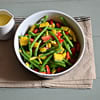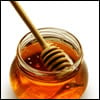I don’t get the whole prohibition of kitniyot. I can’t eat rice or peas because they may be mistaken for chametz, yet my local supermarket is selling kosher-for-Passover cakes and cookies made out of potato starch, which look exactly like the real thing. What gives?!
Reply
One cannot overstate the importance of customs and the place they hold in Jewish law. But indeed, it is quite fascinating which foods are considered kitniyot. While peas, rice and mustard seeds are considered kitniyot, potatoes—out of which many make potato starch and cakes that look exactly like the real thing—are not.
The very word “kitniyot” perhaps lends to the confusion. While it is generally translated as “beans” or “legumes,” in this context, it is not an exact translation. The Code of Jewish Law, for example, mentions “rice and other types of kitniyot”1—and rice is obviously not a bean or legume.
To help clear some of the confusion and get to the heart of your question, let’s briefly explore the three main reasons behind the custom of not eating kitniyot:2
1) Cooked dishes and porridge made from chametz grains or kitniyot appear similar, and one may confuse the two.
2) Kitniyot are often grown in fields adjacent to those in which chametz grain is grown, and these grains tend to mix together. The kitniyot grains can also be confused with the five grains that can become chametz.
3) Kitniyot are often ground into a type of flour that can easily be confused with chametz.
What about potato starch? Why is that not considered kitniyot? Actually, Rabbi Abraham Danzig (1748–1820), known for his halachic work Chayei Adam, is of the opinion that since kitniyot are often ground into a type of flour that can easily be confused with chametz, potato starch is included in the category of kitniyot and may not be eaten by Ashkenazim during Passover.3
However, as a trip to your local kosher supermarket can attest, the overwhelming majority of rabbis reject this opinion and hold that potato starch is not included in kitniyot.4
One possible reasons for this is offered by Rabbi Moses Feinstein (1895–1986), who explains that the custom to not eat kitniyot on Passover developed differently than some other customs. With regard to some bans, a group of rabbis gathered together and created a formal ban, but with regard to kitniyot, different communities developed the custom of refraining from eating certain foods on Passover, either because they could be mistaken for chametz or because they were grown or processed in proximity to flour. Eventually, the custom not to eat these foods became accepted throughout Ashkenazic Jewry. And once a custom has become accepted, it is binding and has the force of Jewish law.5
In the case of kitniyot, if the rabbis would have gathered together and issued a formal ban on any food that looks like chametz and/or is processed in close proximity to flour, then any foods falling under that rubric would have been prohibited as well (such as potatoes).
However, there never was a formal ban issued. Instead, over time, the custom developed that certain foods were not eaten on Passover. As such, the prohibition only applies to those specific foods which were known about and accepted as being kitniyot when the custom began. Since potatoes were not introduced to Europe until the 16th century, they are not considered kitniyot.6
Many kashrut organizations in the United States apparently follow this opinion. But this leads us to another question: Why is corn (maize), a New World crop, generally considered kitniyot? One possible explanation is that unlike potatoes, corn has many of the characteristics of kitniyot, since it is threshed, winnowed and milled.7
In the Shulchan Aruch HaRav, Rabbi Schneur Zalman of Liadi (1745–1812) gives a slightly different explanation about what is included in the custom of not eating kitniyot, which precludes the question about potatoes and corn. He explains that the prohibition of kitniyot applies to any legume-like foods which, when cooked, appear similar to those dishes made out of grain. Additionally, certain foods are prohibited, such as mustard seeds, since they grow in pods similar to other kitniyot, and cumin, since its seeds are similar to grain. However, any other type of garden seeds or vegetables are not included in the prohibition of kitniyot.8
Based on Rabbi Schneur Zalman’s explanation, corn would be considered kitniyot, but potatoes, which are actually tubers that grow underground, would not.
For more on the custom of not eating kitniyot, see The History, Rationale and Practice of Avoiding Kitniyot on Passover.







Join the Discussion